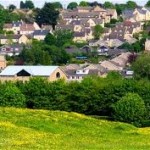 A recent post on the Project for Public Spaces’ (PPS) Placemaking Blog rekindled my long-held interest in the connection between public participation in the planning process and governance, a topic I explored a decade ago during my graduate studies. Driven by faint remembrances of arguments made under the fog of French philosophy and graduate student hubris I dusted off my thesis (what’s a comparable idiom for opening an ancient pdf? Jolt a file?) and investigated whether any ideas were worth injecting into this worthwhile discussion.
A recent post on the Project for Public Spaces’ (PPS) Placemaking Blog rekindled my long-held interest in the connection between public participation in the planning process and governance, a topic I explored a decade ago during my graduate studies. Driven by faint remembrances of arguments made under the fog of French philosophy and graduate student hubris I dusted off my thesis (what’s a comparable idiom for opening an ancient pdf? Jolt a file?) and investigated whether any ideas were worth injecting into this worthwhile discussion.
I’m a staunch believer in the importance of public participation in creating places that are unique, well used, and well maintained. As the architect and educator Henry Sanoff asserts in Community Participation Methods in Design and Planning, “the activity of community design is based on the principle that the environment works better if the people affected by its changes are actively involved in its creation and management instead of being treated as passive consumers.”
But a shift of power in the production of space to its users is required to produce cherished places that are reflective of their authentic context and local knowledge. Open processes, in which designers and public officials facilitate rather than dictate the outcomes, and participants have direct involvement in decision-making, are necessary for such a shift. A by-product of such processes, as the PPS piece suggests, can be stronger cities, community cohesion, shifting definitions of citizenship, and better functioning governance structures.
Below are a few ideas that might help push this discussion further.
There is historical precedent for the connection between the “public” and debates over objects of design and culture (including architecture, as Sylvia Lavin has described). The formation of the modern idea of the “public” itself was based on participation in the discussions that took place in the salons and coffee houses of Europe. The normative ideal of the bourgeois public sphere proffered by philosopher Jurgen Habermas in The Structural Transformation of the Public Sphere was based upon critical public reflection on topics of culture, which happened to be physically located in urban areas, the “life center of civil society.” This discourse, originating in the arts, would later extend to economics and politics and become the foundation of the modern democracies developed during the Eighteenth century.
With the erosion of the public sphere into private “special” interests, the functioning of modern democracies has faltered. And contemporary “expert” culture, explains political scientist Robert Dahl in Democracy and Its Critics, is an impediment to advanced democratization throughout society.
Opening the design process to the public at large can alleviate what Dahl describes as the “bottleneck to advances beyond the present level of democratization” caused by “paternalism grounded in the monopolization of knowledge.” The expert culture of the design professional must become porous to the myriad areas of urban expertise inherent in any community.
An open, participatory design process can find precedent in the Open Source movement in software engineering, in which better products result from a realization that, as David Garcia asserts, “ownership is not what counts, but use.” Successful placemaking processes are predicated on the same belief.
A similar cross-fertilization of ideas can be seen in how guerilla urbanism and space hacking borrow from computer hacking. Whereas open source products allow and encourage editing and augmentation, hacking produces change without seeking permission. The power to change is taken, not granted.
Because the production of space is an inherently political act (as Henri Lefebvre explains), the possibility for more participatory democracies resides in the opportunities for users to participate in creating the built environment. And as Katherine Loflin explains in the PPS article, that participation must produce results.
By beginning to chafe at the power of organized special interests, homogenizing market forces, expert culture, and disempowering public agencies, a pluralist democracy built around placemaking can emerge from the grassroots. As people gather together to discuss how they imagine their environments and what elements are important for the future of their communities, they come to realize and express their values as a group. Although as with any democratic process individual disagreement is inevitable, and even desirable to a certain extent, it is from the empowering experiences gained in the participatory processes of urban design that individuals can learn to become active citizens. Finally, as space users share in the power of placemaking, the true value of a place is maximized.
Obviously, this transformation has huge implications for the practice of planning. But I’ll leave that topic for another post.
Jonathan Nettler, AICP is Managing Editor of Planetizen.
Speak Your Mind
You must be logged in to post a comment.